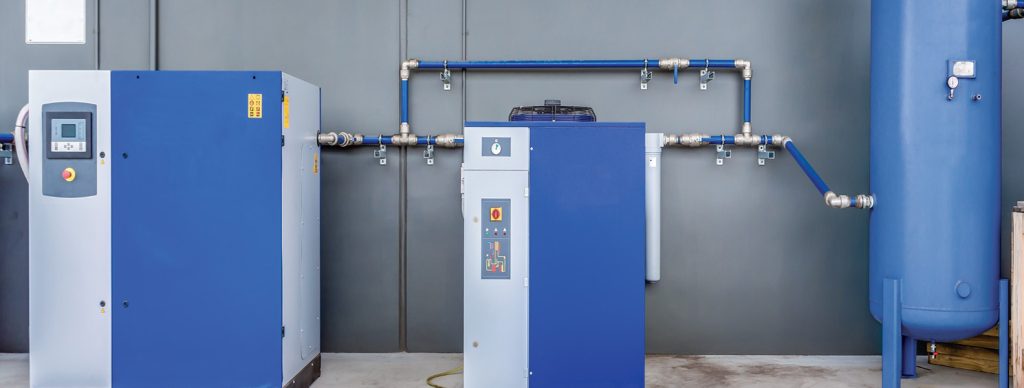6 common design mistakes in compressed air systems

Compressed air is inherently inefficient, but designing the right-sized system will maximize efficiency.
Compressed air systems are always essential parts of industrial plants, and we need to ensure they are well designed and will run efficiently. Compressed air auditing professionals frequently come across many common design mistakes made in installing this essential but inherently inefficient plant utility. This article discusses some of these nagging problems with some suggestions in how to avoid these costly design mistakes.
Compressors are too large
Tip: This problem can be minimized by installing a system of multiple smaller compressors rather than one or two larger ones
VSD compressor is too small
Tip: To avoid control gap the variable range of the VSD compressor must be equal to or larger than the largest fixed speed compressor with which it must work. This usually means purchasing the VSD of the next size larger at minimum.
Inadequate main storage receiver size
Tip: Storage receiver sizing of 1 gallon per cfm is “old school.” System designers have since realized a well-controlled system needs about 3-5 gallons per cfm storage capacity, and best-in-class systems have upwards to 10 gallons per cfm. So, for example, if a system has two 300-cfm compressors, and a one 460-cfm compressor, we would want between 1,380 and 2,300 gallons of total system storage receiver capacity. Best in class would have 4,600 gallons of storage divided between wet and dry receivers.
No planning for failure
Tips: It is best to ensure pressure reliability by making sure you have at least enough backup capacity to ride out the failure of your largest compressor and still be able to maintain the pressure during system peaks. And be sure to design in well-located service ports so that rental compressors can be installed if the worst happens. These service ports should be located before system air dryers to ensure good air quality even when hot and wet diesel driven compressors with inadequate after-coolers are used.
Piping is too small and/or is in the wrong layout
Tips: Be aware that there will be times in the future where the air drying system will fail, so slope the piping carefully away from the direction of flow and install drains at all low spots. Ensure all entrances and exits from main distribution are from the top of the pipe to ensure the best air quality, should moisture be present in times of failure. Using this sizing advice, your system should have a total pressure loss (not including dryers and filters) of less that 2% of the system pressure. So, for a 100-psi system, the pressure loss in the main distribution system end-to-end should be less than 2 psi.
Purchasing cheap and inefficient components
Tip: Don’t forget about system components supplying and conditioning the air at the end uses of a compressed air system. Very often poor design at this location can cause local pressure loss of 15 to 20 psi through under sizing. These items should be always selected for peak flow of each individual compressed air demand, not the average. Careful component selection at this location can go a long way in reducing the required system pressure, while reducing the cost.
